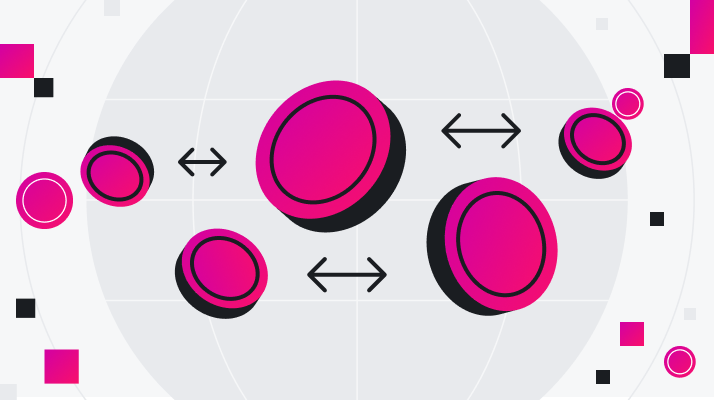Why Are So Many Businesses Monetizing Embedded Finance?

Why Are So Many Businesses Monetizing Embedded Finance?
Today, speed and convenience reign supreme. Amid skyrocketing expectations, businesses are racing to implement smarter revenue and customer retention strategies—beginning with frictionless, scalable financial services that complement their existing offerings.
One breakthrough solution? Embedded finance, whereby businesses integrate financial technology into their existing products and services. Potential use cases span the entirety of your day-to-day financial operations, including payments, banking, lending, and insurance.
Let’s look at a few examples:
The Amazon Lending program allows sellers to apply for flexible business loans online—without leaving the Amazon website.
In partnership with Klarna, Nike offers a “buy now, pay later” (BNPL) option.
Lyft drivers get exclusive access to a Lyft-branded debit card, which enables immediate payments (after each ride, versus once a week).
By incorporating financial and non-financial services into the same interface, businesses can provide a more enjoyable and frictionless customer experience. In doing so, they open the door to new, high-potential revenue opportunities—and cut customer attrition at the source.
How does embedded finance drive revenue gains?
According to a recent study, the embedded finance industry is set to reach $7 trillion in the next decade. Aside from its most obvious benefits, what explains its explosion in popularity?
Through a number of monetization opportunities—including new revenue streams and stronger relationships with customers, vendors, and other stakeholders—embedded finance enables greater profitability, more efficient scalability, and a smoother product experience.
Indirect monetization
In today’s hypercompetitive environment, the customer experience matters more than ever. That’s precisely what drives indirect monetization—another major contributor to long-term revenue growth.
Consider the following:
A better user experience leads to a stickier product. That, in turn, gets customers to spend more time on your site—and purchase more things while they’re at it. The result? More referrals, along with greater customer lifetime value (LTV).
Minimizing friction goes a long way. For example, an embedded check-out process keeps users on your website—as does in-site access to lending products, which eliminates the need for a traditional bank or another provider.
Embedded finance also yields new user insights—a plus for you and your customers. Harness data to improve your offerings, capitalize on evolving trends, and optimize your monetization strategy.
Take a look at Toast; over the years, they have layered in additional products to their platform, many of which are embedded finance, such as payroll and lending. Nearly 2/3s of their customers are now using 4+ of their products, and because their customers can fill so many of their needs through Toast, they don’t need to seek out other vendors and have a much stickier relationship.
Direct monetization
Throughout the user journey, you can collect additional revenue by charging customers transaction fees when they use your financial products or services. These include:
Payout markups (when you enable your customers to pay suppliers or remit funds through different payment rails)
Payment acceptance markups (when you enable business customers or sellers to process payments from their end-customers)
Card interchange fees (every time a business or individual uses a card you’ve issued to them)
FX markups (to convert one currency to another)
Further, embedded finance enables the launching of new pricing models that bundle SaaS and financial products. Doing so benefits your business and your end-users: charge (or increase) a recurring SaaS fee for combined services, all directly accessible on your platform.
With the right partner, getting started is easy. Airwallex executes all of the above programmatically—and directly within your account.
Airwallex moves the needle
With the right approach to monetization, you can turn embedded finance into an efficient and scalable growth engine. Airwallex makes it possible from the get-go, with 60+ financial licenses, best-in-class developer capabilities, intuitive APIs and native integrations, and customizable UI as well as proven success with companies like Shein, Brex and more. Meet customers where they are—and reap new benefits along the way.
Airwallex’s embedded finance solution includes three primary solutions:
Global Treasury: Enable your customers to collect, store, and disburse funds across the globe.
Banking as a Service: Create full-featured financial services, including accounts, cards, and lending opportunities.
Payments for Platforms: Integrate end-to-end payments into your platform or marketplace, allowing customers or sellers to accept payments from their customers.
To learn more, read our white paper or contact a member of our sales team.
You don't need a bank to run your business
We're not a bank, we're better.
Share
Related Posts

How to use Airwallex for automated insurance payouts
•5 minutes

Wallets, cards, and the flywheel effect: the formula for marketpl...
•6 minutes
